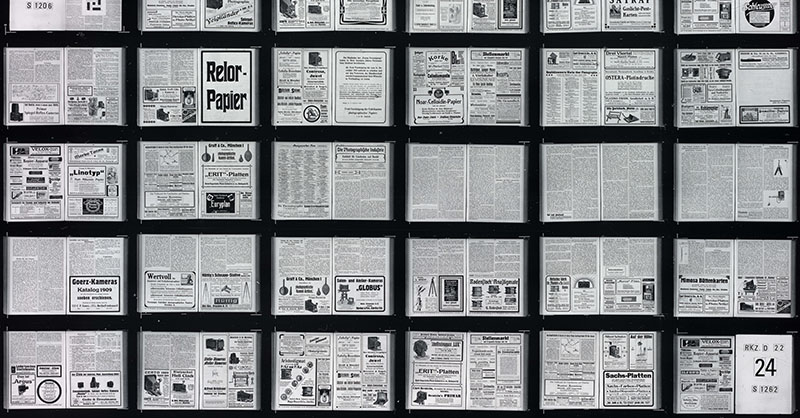Difference between revisions of "Zooming User Interface History"
| Line 7: | Line 7: | ||
Often the user has access to the plate holding the screen and can pan by moving the plate itself. Reading a newspaper on a microfilm reader is quite comfortable as headlines make it easy to find relevant articles. | Often the user has access to the plate holding the screen and can pan by moving the plate itself. Reading a newspaper on a microfilm reader is quite comfortable as headlines make it easy to find relevant articles. | ||
| − | + | [[File:Microfilm_newspaper.jpg]] | |
After a fierce patent battle in the middle of the nineteenth century microfilm readers were gradually refined. They were used by a few libraries at the end of that century. In 1904 a fire destroyed more than half of manuscripts in the National Library of Turin, so it was decided, that a photographic library would be established in all libraries. 1956 Unesco set up a microfilm unit to film all books and documents in danger of being destroyed. At the end of twentieth century microfilm readers became commonplace in most libraries. | After a fierce patent battle in the middle of the nineteenth century microfilm readers were gradually refined. They were used by a few libraries at the end of that century. In 1904 a fire destroyed more than half of manuscripts in the National Library of Turin, so it was decided, that a photographic library would be established in all libraries. 1956 Unesco set up a microfilm unit to film all books and documents in danger of being destroyed. At the end of twentieth century microfilm readers became commonplace in most libraries. | ||
| Line 13: | Line 13: | ||
What can we learn from this? It't not necessary to have digital technology or electricity to benefit from spatial organization of compressed information. Microfiche has easier navigation potential as it uses both horizontal and vertical axis. Finding information in a filmed newspaper can be easier than in books, because of HEADLINES. They function as both signposts and spatial anchors at the same time. They play a major role in structuring information. | What can we learn from this? It't not necessary to have digital technology or electricity to benefit from spatial organization of compressed information. Microfiche has easier navigation potential as it uses both horizontal and vertical axis. Finding information in a filmed newspaper can be easier than in books, because of HEADLINES. They function as both signposts and spatial anchors at the same time. They play a major role in structuring information. | ||
| − | + | [[File:Microfiche_gross-800x600.jpg]] | |
Revision as of 15:08, 11 August 2013
Microfilm readers
Microfilm/microfiche readers have the capability to pan and zoom filmed books and documents. Microfilm is a reel of photos, microfiche is information captured on flat transparent cards.
Often the user has access to the plate holding the screen and can pan by moving the plate itself. Reading a newspaper on a microfilm reader is quite comfortable as headlines make it easy to find relevant articles.
After a fierce patent battle in the middle of the nineteenth century microfilm readers were gradually refined. They were used by a few libraries at the end of that century. In 1904 a fire destroyed more than half of manuscripts in the National Library of Turin, so it was decided, that a photographic library would be established in all libraries. 1956 Unesco set up a microfilm unit to film all books and documents in danger of being destroyed. At the end of twentieth century microfilm readers became commonplace in most libraries.
What can we learn from this? It't not necessary to have digital technology or electricity to benefit from spatial organization of compressed information. Microfiche has easier navigation potential as it uses both horizontal and vertical axis. Finding information in a filmed newspaper can be easier than in books, because of HEADLINES. They function as both signposts and spatial anchors at the same time. They play a major role in structuring information.


